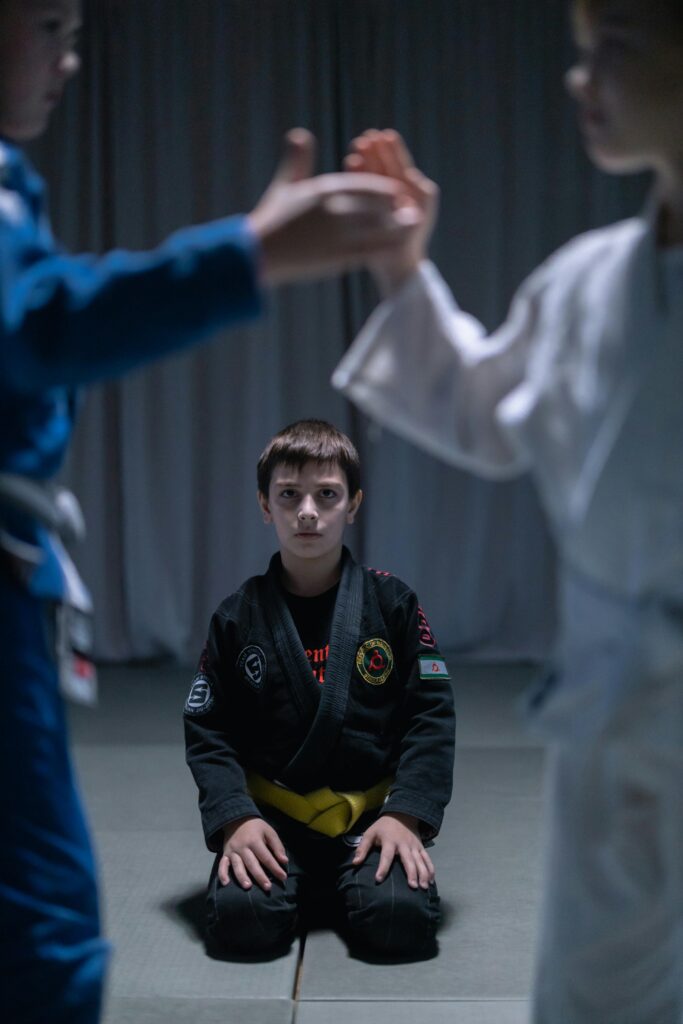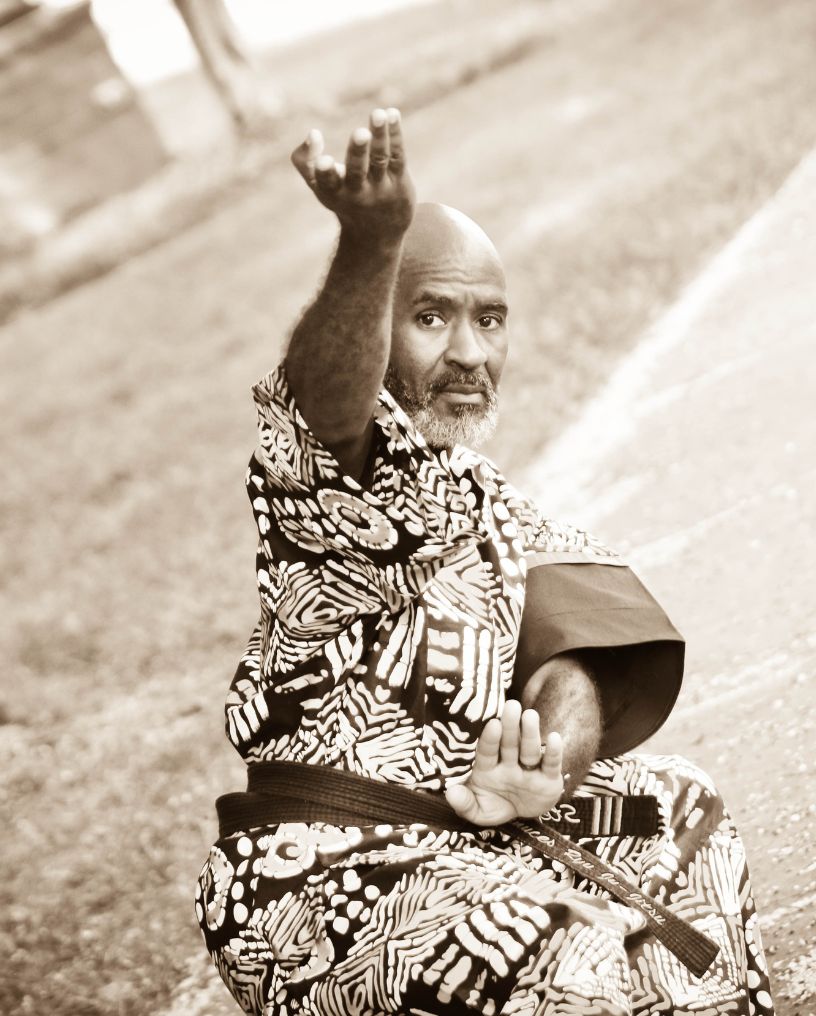If someone grabbed you by the throat, would you know what to do? A chokehold is one of the most frightening and disabling attacks you can face, but you’re not powerless.
With the right techniques, you can break free quickly and effectively—no matter your size or strength. The key is staying calm, knowing where to strike, and practicing the moves that give you the upper hand.
At Eye2Eye Combat, we’ve helped people like you develop the confidence and skills to handle real-life threats. Let’s explore how to defend yourself from being choked and take control when it matters most.
What Makes Chokeholds Dangerous and Common in Attacks
Chokeholds are a serious threat because they can quickly incapacitate someone, disrupting breathing and blood flow in a matter of seconds.
These tactics are commonly used in confrontations because of their efficiency and the psychological control they exert over the target. Let’s explore what makes chokeholds so dangerous and why attackers often rely on them.
The Anatomy of a Chokehold
Chokeholds work by compressing your throat or neck, either obstructing your airways or restricting blood flow to your brain.
When your airways are blocked, oxygen can’t reach your lungs. Similarly, when pressure is applied to your carotid arteries, blood flow to the brain is interrupted.
This combination can lead to dizziness, disorientation, or unconsciousness within seconds.
Recognizing the signs and mechanics of a chokehold is critical for planning your escape. The earlier you understand what’s happening, the faster you can act.
Why Attackers Use Chokeholds
Attackers favor chokeholds because they’re quick to apply and extremely effective against someone who isn’t prepared.
A chokehold immobilizes its target, limiting movement and instilling fear. This psychological dominance makes the victim feel helpless, often causing them to freeze up.
By understanding this power dynamic, you can overcome the intimidation factor and focus on the steps needed to escape.
The Immediate Risks of Not Acting
Every second counts when you’re caught in a chokehold. If you don’t act quickly, the risks escalate. Prolonged oxygen deprivation or restricted blood flow can result in severe injury or unconsciousness.
Acting decisively gives you a chance to disrupt the attacker’s control and regain the upper hand. Quick thinking and training are your strongest allies in these moments.
Principles for Escaping Chokeholds Safely
Escaping a chokehold isn’t about overpowering your attacker—it’s about using smart, effective techniques while staying composed. These foundational principles will help you break free safely and efficiently.
Staying Calm Under Pressure
When you’re in a chokehold, your natural response might be panic, but that works against you. Panicking not only drains your energy but also clouds your judgment, making it harder to think clearly.
Instead, focus on taking controlled, shallow breaths and mentally rehearsing your escape techniques. Staying calm lets you respond with precision and conserve the energy you’ll need to escape.
Targeting Weak Points
Chokeholds might feel unbreakable, but they have built-in vulnerabilities. Attackers rely on their grip to maintain control, so your best option is to disrupt that grip.
Focus on breaking their thumbs or prying their fingers apart. These are the weakest links in their hold, and targeting them can significantly reduce their ability to maintain control.
A well-placed move here can be the difference between staying trapped and getting free.
Using Leverage Over Strength
You don’t need to match your attacker’s strength to escape. Instead, use leverage and positioning to your advantage. Shift your weight, use your hips, and rely on angles to create space.
By moving strategically, you can disrupt their balance and weaken their hold, even if they’re physically stronger. This approach makes escaping more about technique than raw power.
Step-by-Step Techniques for Breaking Free
Once you understand the principles of escape, it’s time to apply them with practical techniques. These moves are designed to be straightforward and effective, helping you break free and protect yourself in real situations.
Front Chokehold Escape
A front chokehold can feel overwhelming, but a few simple actions can make all the difference:
- Tuck your chin: Lower your chin to protect your windpipe and make it harder for the attacker to apply pressure.
- Raise your arms: Form a “V” shape with your arms and bring them up between the attacker’s hands.
- Break their grip: Push outward with your arms while stepping back. This disrupts their balance and forces their hands away from your throat.
- Create distance: Once free, step back quickly to establish space and prepare to defend yourself if necessary.
Rear Chokehold Escape
When someone grabs you from behind, staying grounded and focused is key:
- Lower your center of gravity: Drop your weight by bending your knees. This makes you harder to lift or control.
- Turn your head: Rotate your chin into the crook of their arm. This creates space and allows you to breathe.
- Pull and pivot: Use one hand to pull down on their forearm while stepping to the side to escape their hold.
- Regain control: Once free, assess your surroundings and prepare to defend or flee as needed.
Ground Scenarios
Being pinned while choked adds another layer of difficulty, but these techniques can help:
- Shift their weight: Use your hips to roll or create enough space to move.
- Strike vulnerable areas: Target sensitive spots like their groin or face to disrupt their focus.
- Mat work practice: Familiarize yourself with ground techniques to build confidence and control in these situations. This preparation helps you avoid panic and act effectively.
Integrating Self-Offense
Escaping a chokehold is only part of the solution. Once you’re free, you need to take control of the situation to ensure your safety:
- Use a quick, decisive counter like a knee to their stomach or a strike to their ribs. These moves disable your attacker long enough for you to escape.
- Remember, self-offense is about creating opportunities to protect yourself. A strong counterattack can give you the critical seconds needed to regain control or get away safely.
Tools and Training to Enhance Your Defense
You don’t need to be a martial arts expert to protect yourself effectively. What matters most is focused practice and physical preparation.
By committing time to improving your skills and fitness, you’ll build the confidence and ability to handle real-life scenarios.
Defense isn’t about how many techniques you know—it’s about how well you can execute the ones you’ve practiced repeatedly.
Practicing with a Partner
Practicing with a partner is one of the most practical ways to prepare for chokehold situations.
Simulating real scenarios lets you experience the pressure of an attack in a controlled environment. This helps you build muscle memory, so your reactions become instinctive when it matters most.
Regular practice also highlights areas where you might need improvement, such as grip strength, timing, or positioning. By working together, you and your partner can refine each other’s skills and ensure progress.
Strengthening Core and Neck Muscles
A strong core and neck are your natural armor against chokeholds. These muscles stabilize your body and make it harder for an attacker to maintain their grip.
Planks are excellent for strengthening your core, while neck bridges help build resistance in your neck. Resistance band exercises are also effective because they let you mimic real-world movements while increasing strength.
Incorporating these exercises into your routine improves your readiness and boosts your overall resilience.
The Importance of Mat Work
Groundwork is a cornerstone of self-defense. It’s not uncommon to lose your balance or get taken down during an attack, and being comfortable on the ground can make a huge difference.
Mat work teaches you how to use the floor to your advantage, whether that means rolling to escape or using your body to control your attacker. These skills allow you to move efficiently and decisively, even in vulnerable positions.
Practicing groundwork not only prepares you physically but also reduces fear of being on the ground, giving you a psychological edge.
Tips for Avoiding Chokehold Situations Altogether
The best defense is avoiding danger before it even starts. While it’s crucial to know how to defend yourself, prevention is equally important.
Being aware of your environment and knowing how to navigate potentially risky situations can keep you safe without needing to fight.
Situational Awareness
Staying aware of your surroundings is your first and most reliable layer of defense. Pay attention to who and what is around you, especially in crowded or unfamiliar areas.
Keep distractions like your phone to a minimum, as they can dull your senses. Trust your instincts—if something feels off, it probably is.
Adjust your behavior accordingly, whether that means leaving the area or positioning yourself where you can see potential threats coming.
Non-Confrontational Strategies
Most situations can be diffused before they escalate into physical altercations. Calm, assertive communication goes a long way in disarming tension.
Use a steady voice, maintain eye contact, and keep your body language confident but non-threatening.
Avoid sudden or aggressive movements, as these can provoke an attacker. Maintaining a safe distance is also critical—space gives you time to react if things take a turn.
Self-Defense as a Lifestyle
Self-defense isn’t just a skill; it’s a mindset you carry every day. Treat it as an ongoing practice, much like physical fitness or a healthy diet.
Regular training, whether at a local class or practicing at home, keeps your skills sharp and your confidence high. The more you practice, the less likely you are to freeze under pressure.
When self-defense becomes part of your routine, you’re better equipped to handle whatever comes your way.
The Training You Need for Real-Life Safety
Escaping a chokehold isn’t just about strength—it’s about strategy, confidence, and preparation. By learning and practicing these techniques, you’ve taken the first step toward protecting yourself in real-life situations.
But self-defense is a journey, and there’s always more to learn. At Eye2Eye Combat, we specialize in teaching practical, easy-to-learn techniques that work from day one.
Explore our private defense classes and discover how to build your confidence and safety skills with expert training. Take the next step toward mastering self-defense—schedule a session today and see the difference for yourself.
FAQs
1. Are chokeholds legal to use in self-defense?
The legality of using a chokehold in self-defense varies by location. In some areas, employing a chokehold may be considered excessive force, even in self-defense situations. It’s crucial to understand your local laws and consider less risky self-defense techniques.
2. What should I do if someone puts me in a chokehold?
If you’re caught in a chokehold, try to stay calm and act quickly. Tuck your chin to protect your throat, use your hands to relieve pressure, and attempt to break free by targeting the attacker’s weak points, like their thumbs or fingers. Regular self-defense training can help you respond effectively in such situations.
3. Can learning chokehold techniques improve my self-defense skills?
Understanding how chokeholds work can enhance your self-defense abilities, both in applying and defending against them. However, these techniques should be practiced under professional supervision to ensure safety and effectiveness. Remember, some chokeholds can be dangerous and should be used responsibly.
4. How can I defend myself against a rear naked choke?
To defend against a rear naked choke, it’s important to act quickly. Lower your chin to protect your neck, try to control the attacker’s arm to prevent them from securing the choke, and look for opportunities to escape or counter. Training in grappling arts can provide practical experience in handling such situations.





